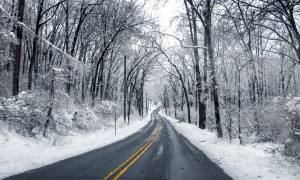Tips To Be Safe
When winter rears its ugly head, many drivers across the United States face different types of challenges when they get behind the wheel. Slow, ice, and slush are reported to cause nearly one in four weather-related vehicle accidents, so it’s critical to have the proper auto insurance and get your vehicle prepared for the wintery months. Here are four driving safety tips that every driver should adhere to.
Prepare Your Ride
As temperatures drop, it’s important to ensure that your car is ready for the cold climate. Gather together a winter driving survival kit, including salt, a snow shovel, and an ice scraper. Make sure that your vehicle’s fluids are topped off, that the oil has been recently changed, and check your tires to determine whether it’s a good time to replace or upgrade them to snow tires.
Watch the Weather
Before you leave your home, monitor weather conditions by checking local news stations on your phone, computer, or television. If the forecast is bad, put off leaving your home until the weather settles, or just plan to drive the next day.
Driving in Nasty Weather
Prior to getting behind the wheel, thoroughly rid your ride of ice and snow, including the roof, windows, lights, mirrors, reflectors, hood, and trunk. Always drive with your headlights on and keep them clean for improved visibility. Use caution when snow banks limit your view of oncoming cars and trucks.
As you get on the road, obey all speed limits religiously. Remember that the speed limits are meant for dry road conditions, not highways covered in snow and slush. Decrease your speed and increase the following distance between you and the car in front of you. Avoid using cruise control if the roads are slick with ice – you want to have as much control over your car as possible. Bridges and overpasses are the first areas to become icy so maintain a safe speed and use caution when driving over them. Also, avoid passing sand trucks and plows as they will greatly limit your visibility.
In the Event of an Emergency
If you do venture out and find yourself stuck, broken down, or in another emergency, stay in your vehicle and out of harm’s way. Wait for help to arrive. Run the heater for 10 minutes every hour to stay warm, but make sure that your exhaust pipe is clear of snow.
Driving in winter weather can be challenging, but with the proper precautions, you can be safe and sound even on slippery roadways.
Interested in reducing your auto insurance rates?

